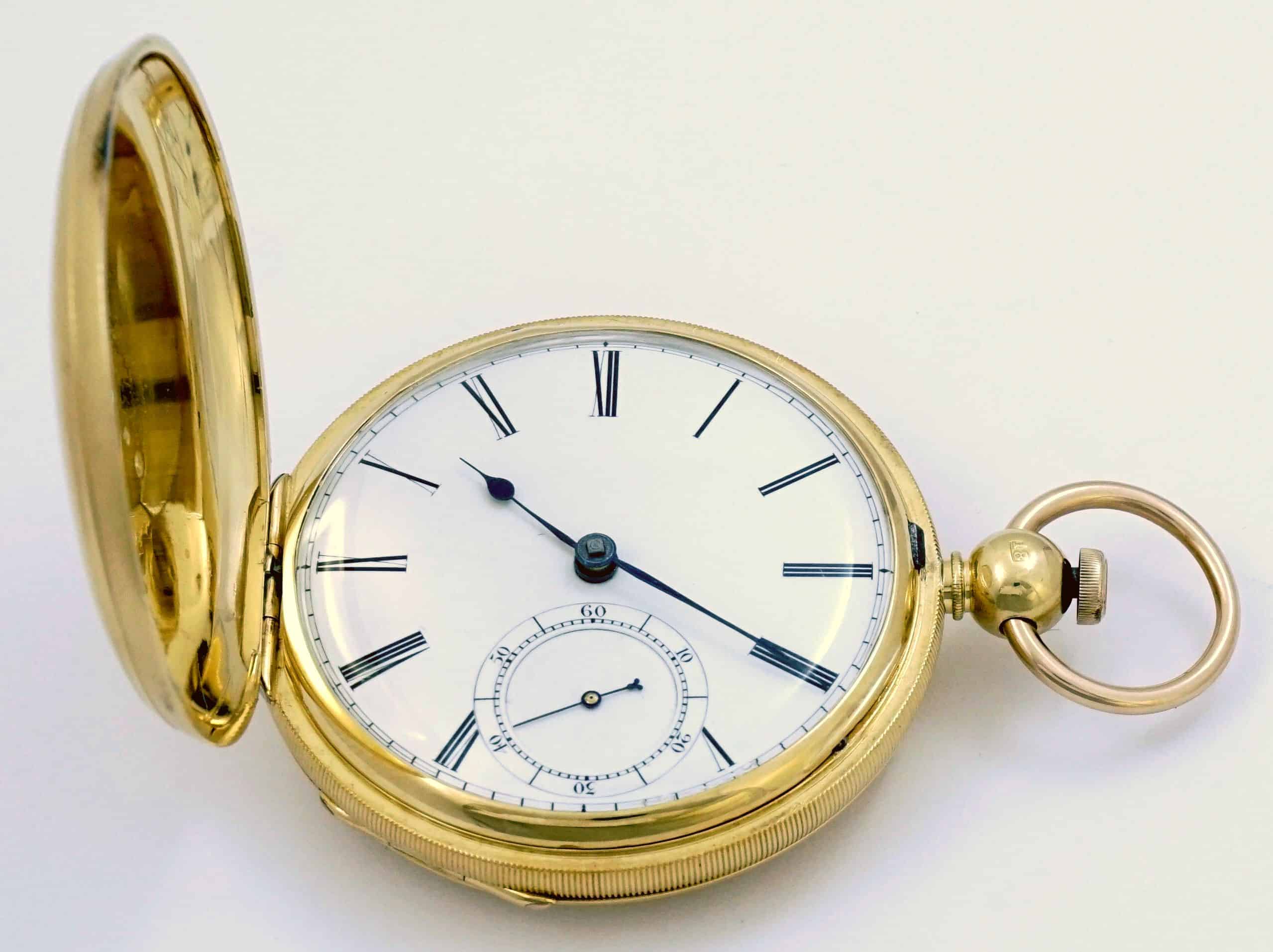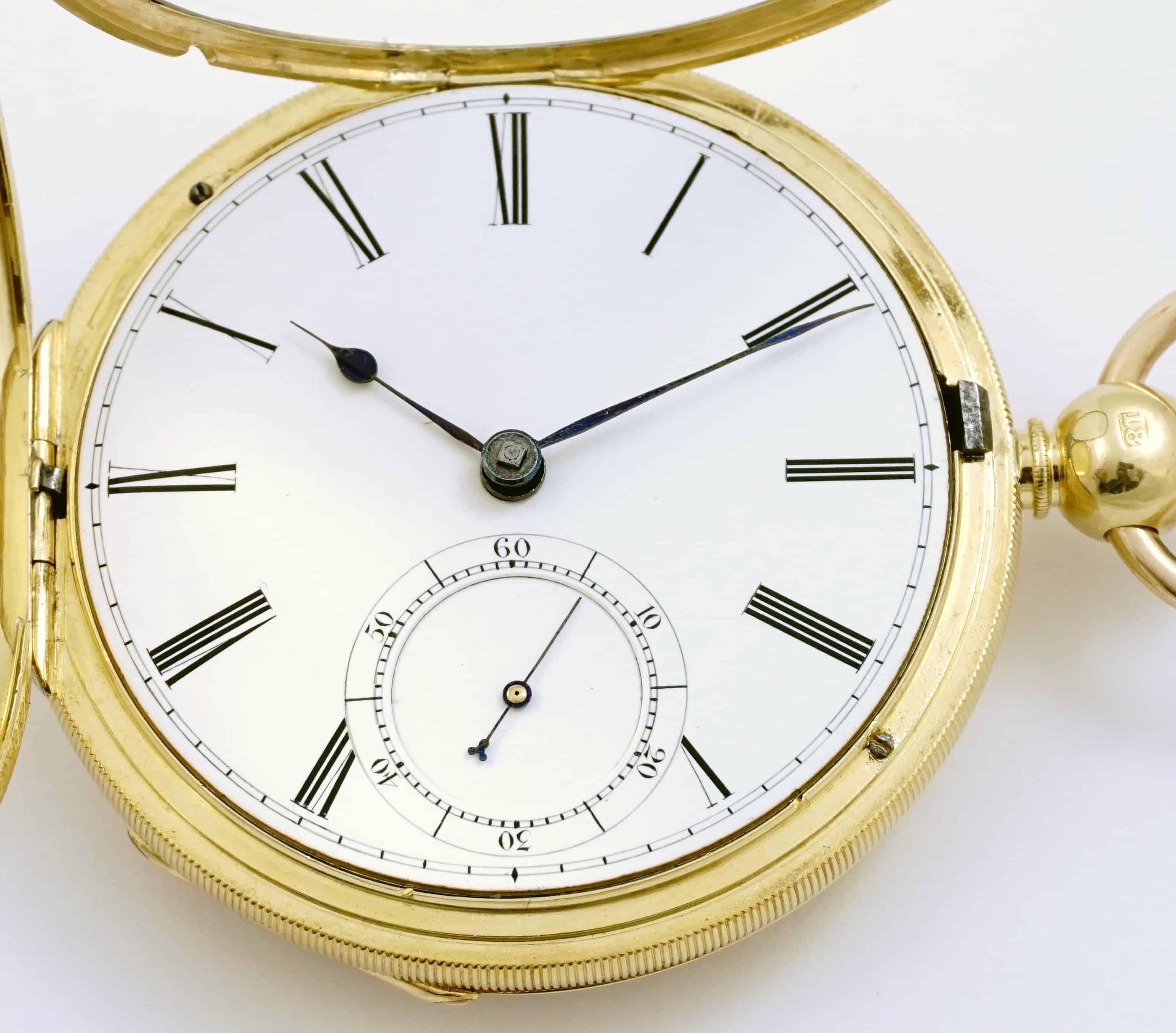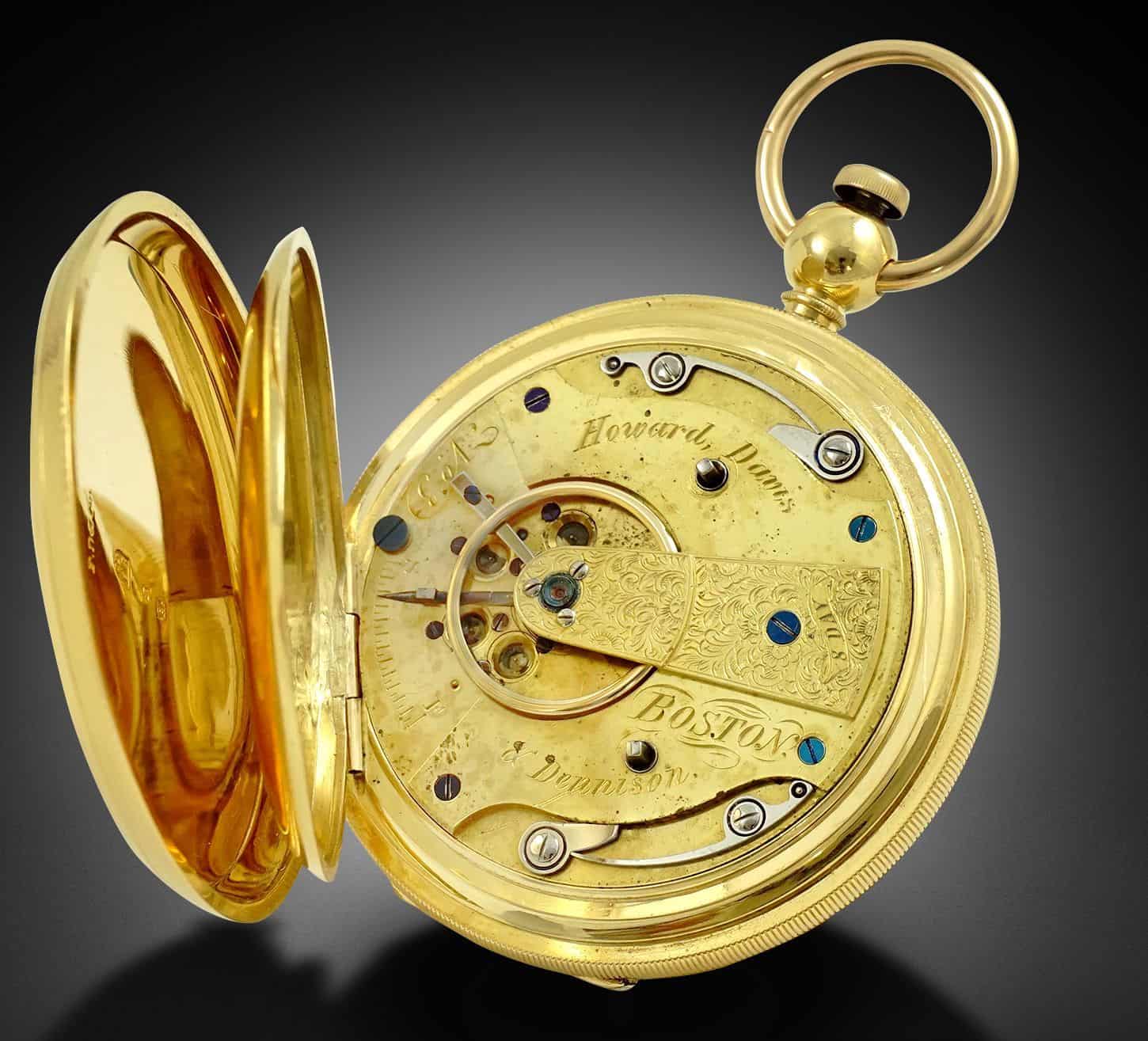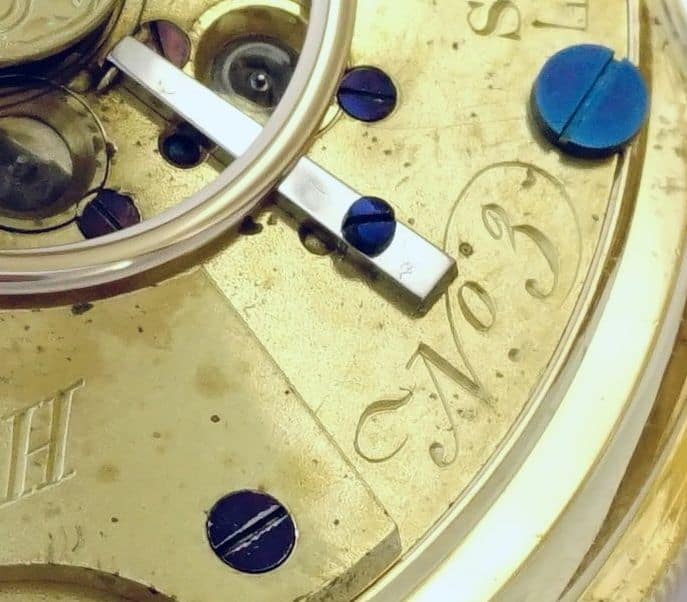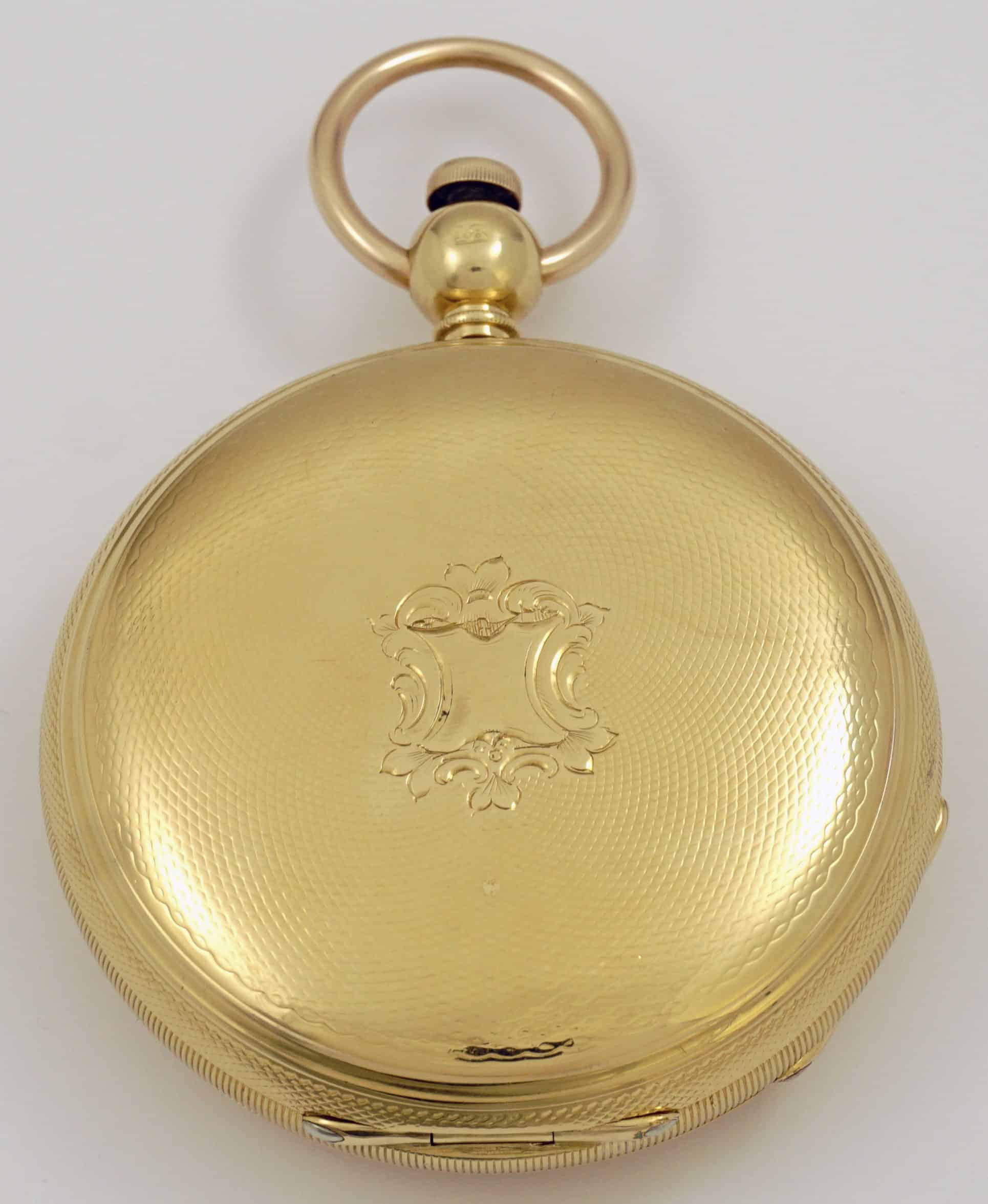It’s about a half-hour before the first lots go up for sale at the Jones & Horan spring auction, and auctioneer and COO Diana Levesque is running through final prep to make sure her team is ready to sell dozens upon dozens of wristwatches, pocket watches, accessories, portrait miniatures, and one very important and historically significant pocket watch.
In the vintage watch world, it’s really easy to get caught up in calling things “important” or “historically significant.” Often, when I read these words and similar in auction descriptions or other watch writing on the internet, I find myself asking “Says who?” When you’re an auction house and you have a vested interest in selling a watch, or a blogger who wants page views, it’s tempting to go nuts with the hyperbole.
But Lot 166 of this auction is very important, and it is historically significant. You can probably attach plenty of other impressive adjectives to it, and they would all be appropriate.
I had the chance to speak with Diana and Jones & Horan’s American pocket watch expert, Fred Hansen, about the Howard, Davis & Dennison pocket watch a few days before it sold. The HD&D is an 18K gold pocket watch, with an 8-day power reserve, and it is #3 in a series of what was originally supposed to be 17 pieces with a high-grade, 8-day movement. As Fred explains, “based on the observed examples, a belief has built over the years that the majority of watches slated to have later serial numbers were never produced,” and that it’s quite possible only the first three in the series have the highly desirable “Howard, Davis & Dennison” signature, making these early examples a kind of holy grail for pocket watch collectors and scholars.









 Featured Videos
Featured Videos




